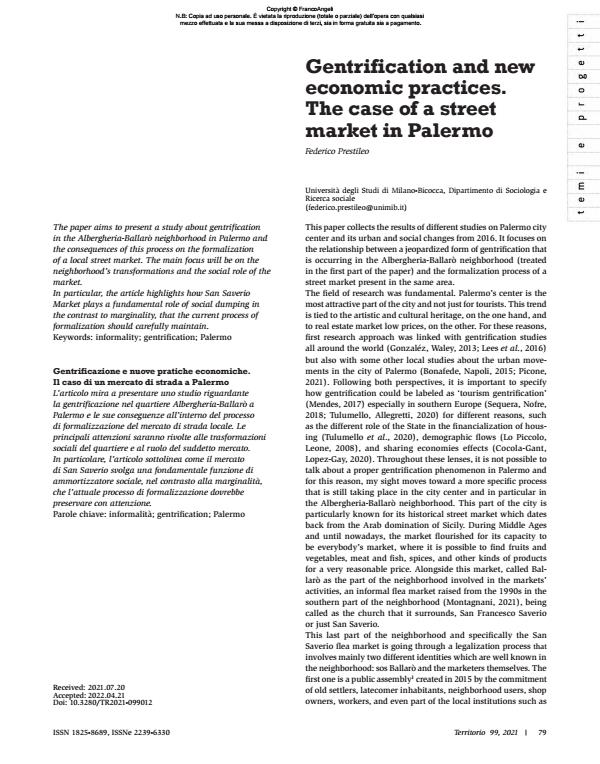Gentrification and new economic practices. The case of a street market in Palermo
Titolo Rivista TERRITORIO
Autori/Curatori Federico Prestileo
Anno di pubblicazione 2022 Fascicolo 2021/99
Lingua Inglese Numero pagine 9 P. 79-87 Dimensione file 375 KB
DOI 10.3280/TR2021-099012
Il DOI è il codice a barre della proprietà intellettuale: per saperne di più
clicca qui
Qui sotto puoi vedere in anteprima la prima pagina di questo articolo.
Se questo articolo ti interessa, lo puoi acquistare (e scaricare in formato pdf) seguendo le facili indicazioni per acquistare il download credit. Acquista Download Credits per scaricare questo Articolo in formato PDF

FrancoAngeli è membro della Publishers International Linking Association, Inc (PILA)associazione indipendente e non profit per facilitare (attraverso i servizi tecnologici implementati da CrossRef.org) l’accesso degli studiosi ai contenuti digitali nelle pubblicazioni professionali e scientifiche
The paper aims to present a study about gentrification in the Albergheria-Ballarò neighborhood in Palermo and the consequences of this process on the formalization of a local street market. The main focus will be on the neighborhood’s transformations and the social role of the market. In particular, the article highlights how San Saverio Market plays a fundamental role of social dumping in the contrast to marginality, that the current process of formalization should carefully maintain.
L’articolo mira a presentare uno studio riguardante la gentrificazione nel quartiere Albergheria-Ballarò a Palermo e le sue conseguenze all’interno del processo di formalizzazione del mercato di strada locale. Le principali attenzioni saranno rivolte alle trasformazioni sociali del quartiere e al ruolo del suddetto mercato. In particolare, l’articolo sottolinea come il mercato di San Saverio svolga una fondamentale funzione di ammortizzatore sociale, nel contrasto alla marginalità, che l’attuale processo di formalizzazione dovrebbe preservare con attenzione.
Parole chiave:informalità; gentrification; Palermo
Federico Prestileo, Gentrification and new economic practices. The case of a street market in Palermo in "TERRITORIO" 99/2021, pp 79-87, DOI: 10.3280/TR2021-099012